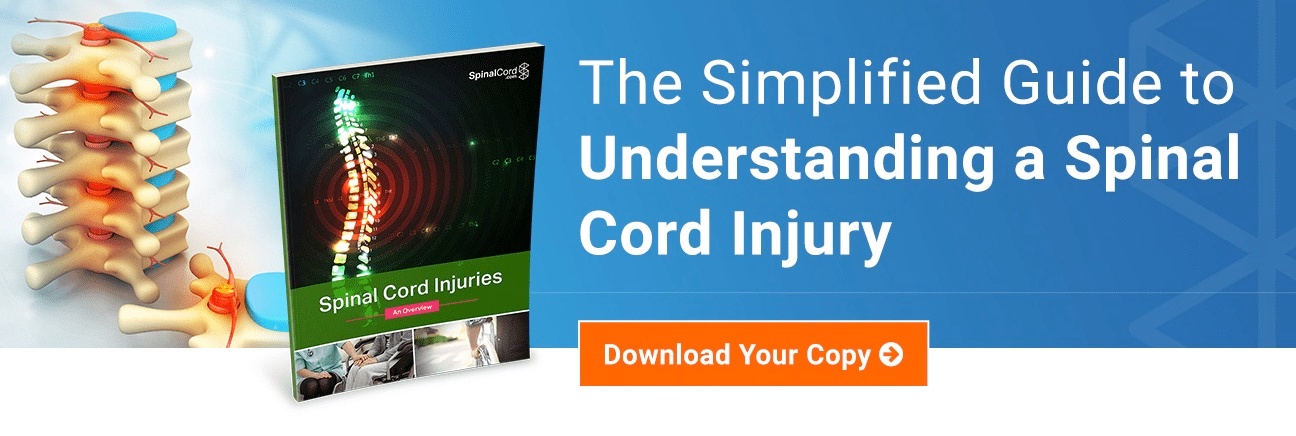Top 5 Signs of Autonomic Dysreflexia
There are a handful of serious side effects of living with a spinal cord injury, and one of the most important is Autonomic Dysreflexia (AD). In layman's terms, it is a condition caused by the nervous system that can lead to hospitalization. The good news is that it can be prevented in most cases.
Autonomic Dysreflexia is the response of your body's nervous system when it is stimulated in an uncomfortable way.
The more pain that your body may be feeling but also that you cannot feel in your mind, the Autonomic nervous system will kick in, alerting you to the pain that is occurring below your level of injury. Those with a T6 injury or above will experience Autonomic Dysreflexia the most often. In rare cases, those with lower level injuries will experience AD as well.
It is relatively easy to learn the signs of Autonomic Dysreflexia, which will be your first line of defense when this occurs. Fortunately, signs of this condition are so pronounced that you will know what it is quite quickly when it occurs. The symptoms will fade away fast once the pain stimuli is removed. Common stimuli that can cause Autonomic Dysreflexia include UTI's, pressure sores, impacted bowel, curled toes and burns.
The Top 5 Signs of Autonomic Dysreflexia
Note: Always talk to your doctor about any serious conditions pertaining to your spinal cord injury.5. Confusion and/or Anxiety
Some of earliest signs of Autonomic Dysreflexia are confusion, anxiety and apprehension. These mental states occur in the early stages of Autonomic Dysreflexia and can be a sign that something may be uncomfortable below your level of injury. Always be aware of your state of mind and its fluctuations.
4. Flushed Skin
Flushing of the skin, particularly having a red flushed face, is a tell-tale sign of Autonomic Dysreflexia. A red flushed face can also be enhanced immediately after the pain/stimuli is removed, but your skin, too, will fade to normal quickly once your body no longer feels the pain that is causing the Dysreflexia. Sometimes people will experience flushed skin below their level of injury, but typically it is restricted to the skin above the level of injury only.
3. Profuse Forehead Sweating
Sweating is a serious sign of Autonomic Dysreflexia. If you find yourself sweating, especially on your forehead, make sure to look at all areas of your body to remove the source of the pain. Sometimes you'll even find yourself sweating below your level of injury and in odd areas, like around your belly button.
2. Pounding Headache
If you haven’t removed the painful stimuli in time, a sudden headache will occur when Autonomic Dysreflexia is in full effect. These headaches will come “out of the blue” and can be quite painful, typically focused on the frontal lobe of the head; it will be a pounding headache. Also, make sure to elevate your head (do not lay down) when this is occurring. Your headache will go away immediately once the stimuli is removed. I usually follow up with 3-4 Advil; consult your doctor on the correct dosage for you.
1. High Blood Pressure
The most important sign of Autonomic Dysreflexia, because it can literally mean life or death, is your blood pressure. Specifically, an elevated blood pressure that is over 200 mmHg is dangerous. The high blood pressure is caused by the hit to the Autonomic nervous system by the pain, which leads to increased blood pressure. It will rise quickly into the severe zone, and a stroke can occur if the AD is extended.
Lastly, make sure to look at all areas of the body to find the pain source. If you cannot find what is causing your pain, always go to the ER. They are equipped with the technology (X-Rays, CT Scans, etc) to pinpoint the cause.
Stay Updated on Advancements On Traumatic Brain &
Spinal Cord Injuries
About the Author





